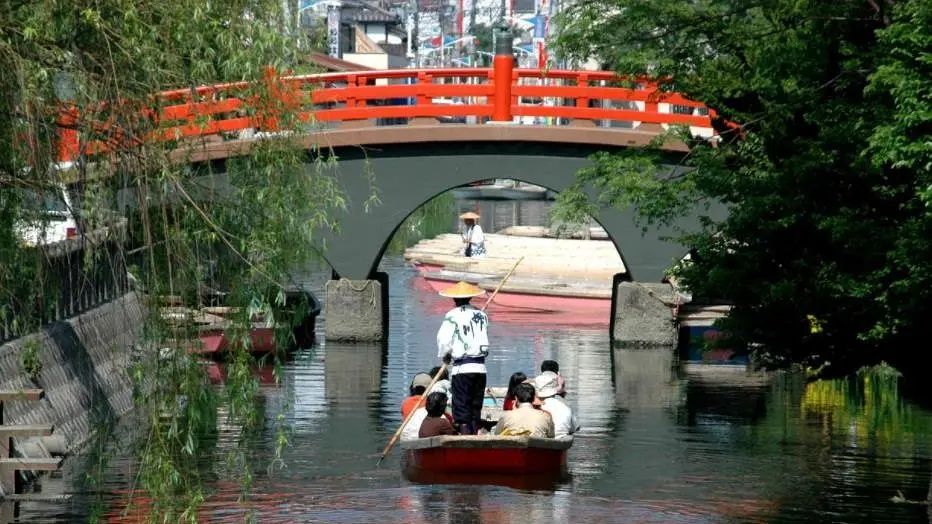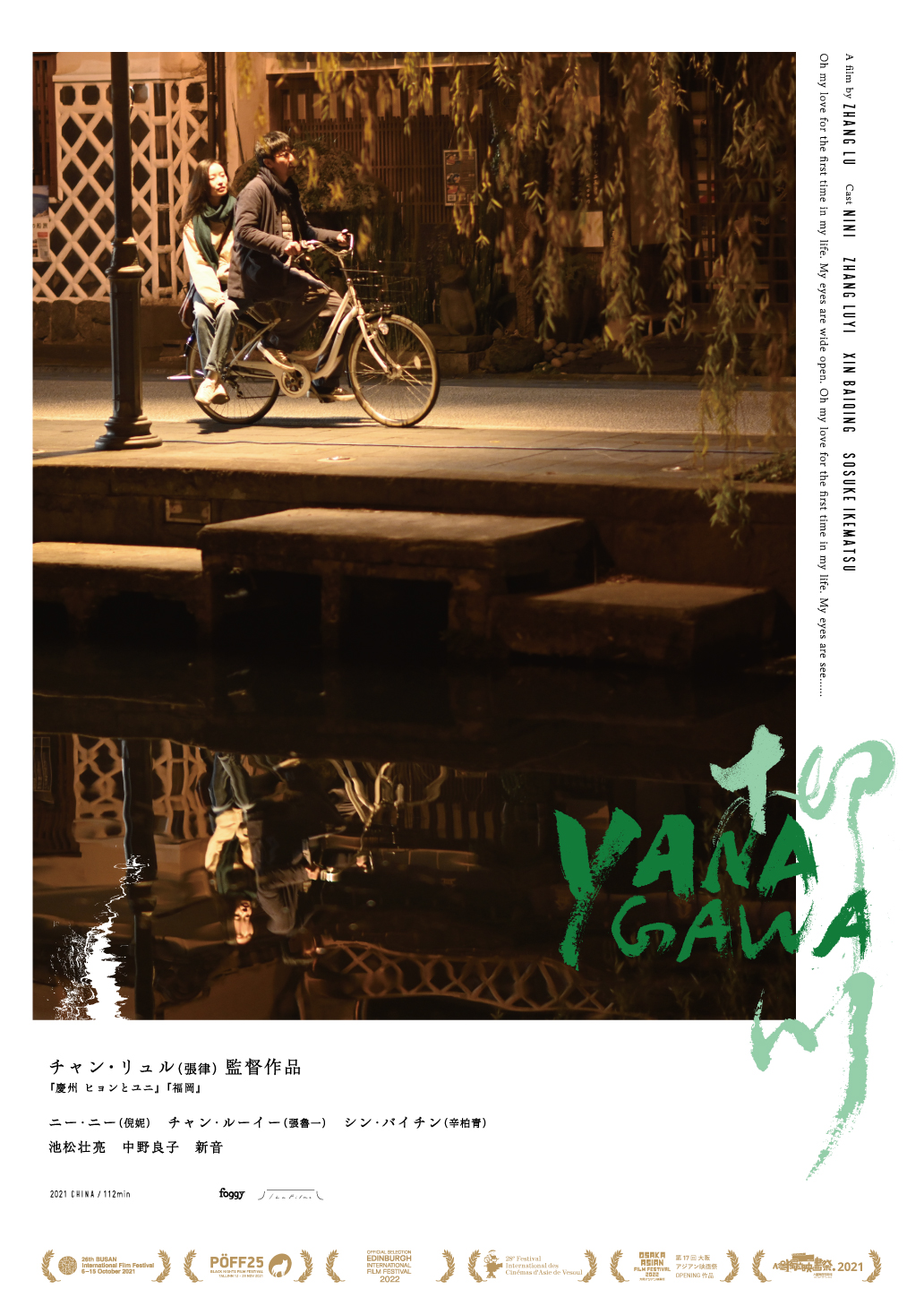
The movie "A Long Confession" (directed by Zhang Lu), but most viewers prefer the original name "Yanagawa." The film tells the story of two brothers from Beijing, Li Chun (played by Xin Baiqing) and Li Dong (played by Zhang Luyi), who travel to Yanagawa, Japan, and reunite with their former love interest, A Chuan (played by Ni Ni), after nearly 20 years. A Chuan's real name is Yanagawa, and while living in London, she remembered this city of the same name after her Japanese classmate Nakayama Daiki (played by Ikematsu Sosuke) said, "You are my hometown," and came here.
The actors include Satoshi Tsumabuki, singer Hideo Terunaga, poet Hakushu Kitahara, and the ancestral home of Yoko Ono, all of which are in Yanagawa. Yanagawa is located in the southern part of Fukuoka Prefecture, with a population of just under 70,000. The main urban area is crisscrossed by canals, and its thriving industries are all due to water, which is why it is also known as the "Water City" or "Venice of Kyushu."
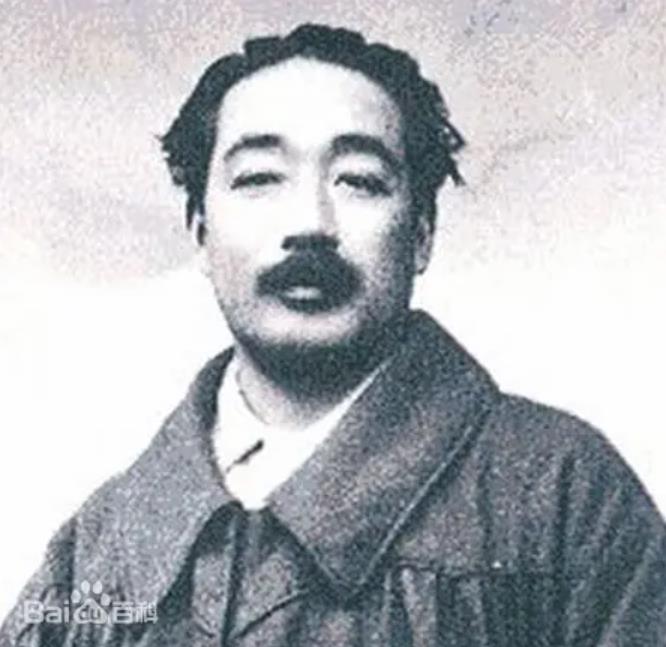
Hakushu was born in 1885 into a sake merchant family in Fukuoka. At the age of nineteen, while studying at Waseda University, he became famous in the literary world with his poem "Kyunsei Fu," and soon dropped out to focus on poetry. He joined the aestheticism organization "Pan Club" and participated in the founding activities of the aestheticism magazine "Subaru" in the 42nd year of the Meiji era (1909). That same year, his debut poetry collection "Evil Sect" was published, and two years later, he published another collection titled "Memories," which expressed the mysterious sensations and feelings of his childhood and youth. These two poetry collections established his esteemed position in the poetry world at the end of the Meiji era.
In February 2016, a five-minute promotional video for Yanagawa City went viral online, featuring three girls dressed in beautiful modified kimonos, inspired by the cute designs of the Yanagawa Hina Matsuri (Yanagawa Doll Festival). They danced a soft dance, leading viewers to tour traditional attractions such as the Sanbutsu Shrine, Chomeiji Temple, Hiyoshi Shrine, and Okita Suwa Shrine, showcasing the exquisite Hina dolls, cuisine, customs (such as the Nakayama Daidai Festival and the Ariake Sea Fireworks Festival), as well as the city's famous seafood, specialties (miso, nori, and rice crackers), and more, making it enchanting. The dance was simple and lively, and the youthful exuberance of the girls added vitality to the small town, with thousands of performers passionately involved. In the end, a kappa with a green head popped up, and a ball fell from the sky, igniting the viewers' excitement.
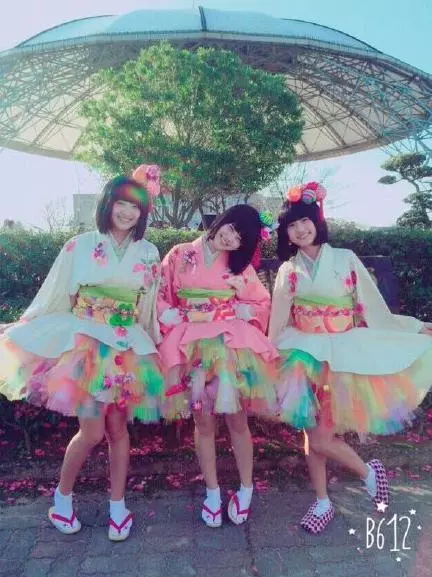
The girl in the middle is named Mio Imada, born in 1997, and her latest work is "Hana ga Saku." The girl on the left is named Yuka Matsuo, and the girl on the right with dimples is Ayu Matsumoto. During the filming of the video, both were 14 years old and still in junior high school. The three girls are artists belonging to Cover Girl Entertainment (CGE), mainly engaged in modeling and acting work.
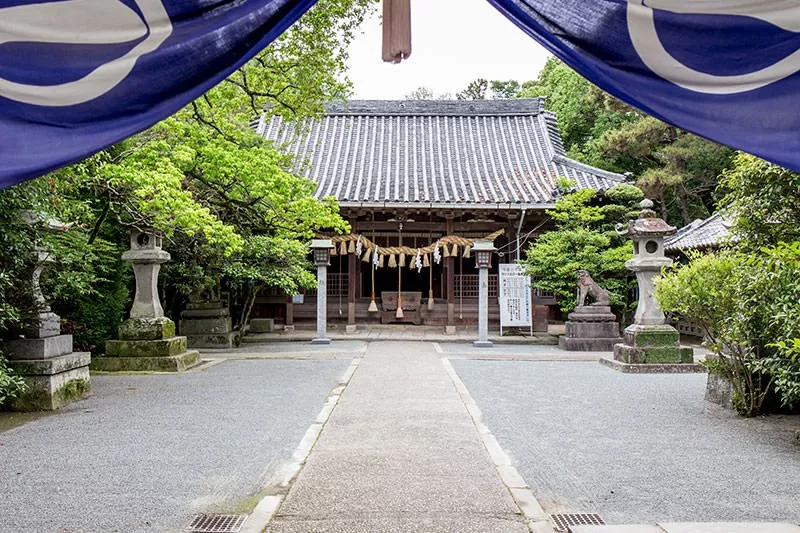
Hiyoshi Shrine, when visiting Yanagawa, in addition to eating eel rice, one must also visit Hiyoshi Shrine. The goshuin here is very beautiful, and there are limited goshuin each month. The deity of Yanagawa Hiyoshi Shrine is Oyamazumi no Kami, known since ancient times as "Sannō-san." It is said that in 1290, it was brought from the Hiyoshi Shrine in Sakamoto, Omi Province for worship, and later became revered by Lord Tachibana Muneshige and subsequent generations of Yanagawa lords, becoming the guardian deity of the shrine.
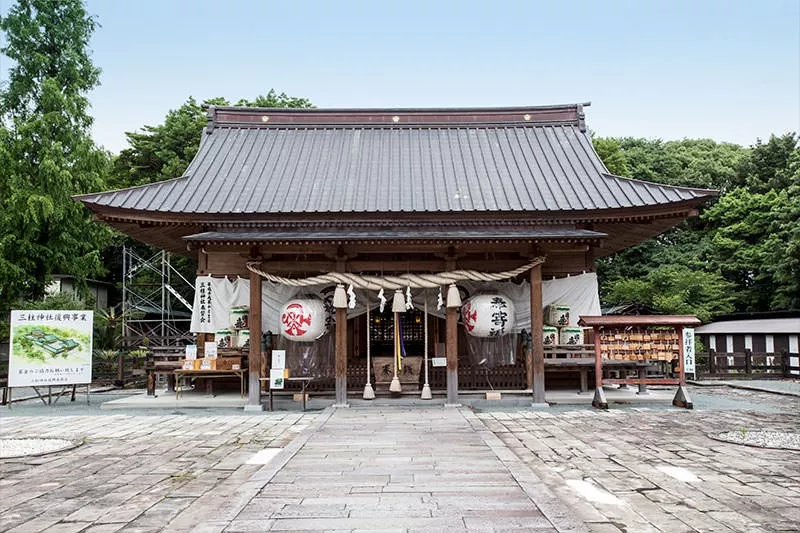
Sanbutsu Shrine
The small town of Yanagawa, located in the southern part of Fukuoka Prefecture, is surrounded by canals and is known as the "Water City," famous for its charming boat experiences. The local residents love the waterways of Yanagawa Castle, skillfully using the historical waterways for urban and rural development, and regard it as a blessing.
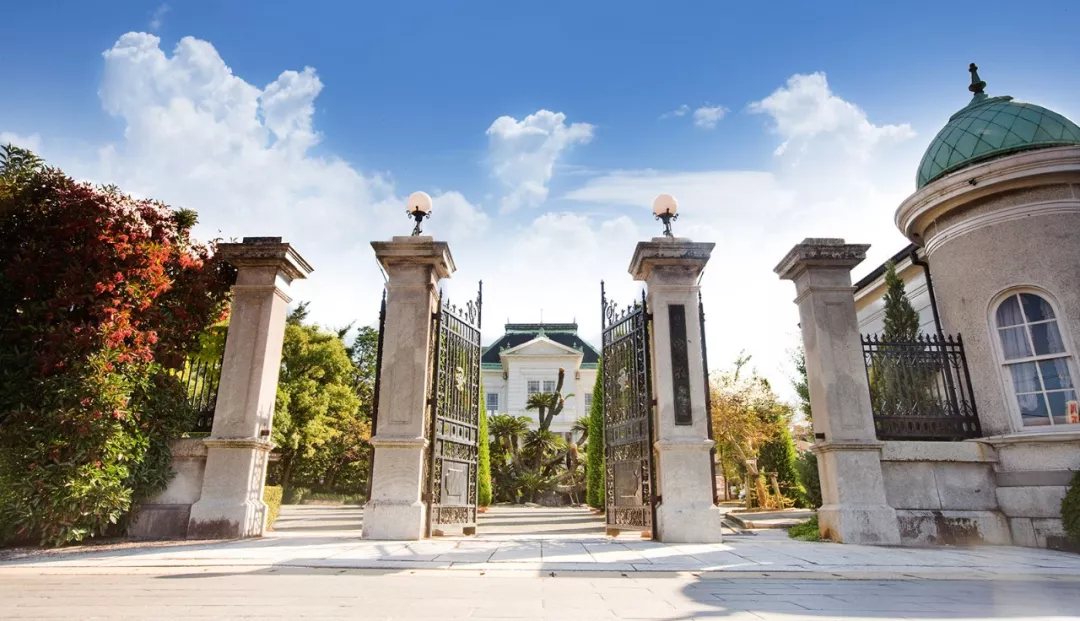
Located near the end of the boat tour, "Ohanatei" has been the residence of the Tachibana family, the lords of Yanagawa, since the Edo period. Due to its unique historical background and context, it adds color to auspicious events such as engagements and weddings, offering the best blessings to many newlyweds.
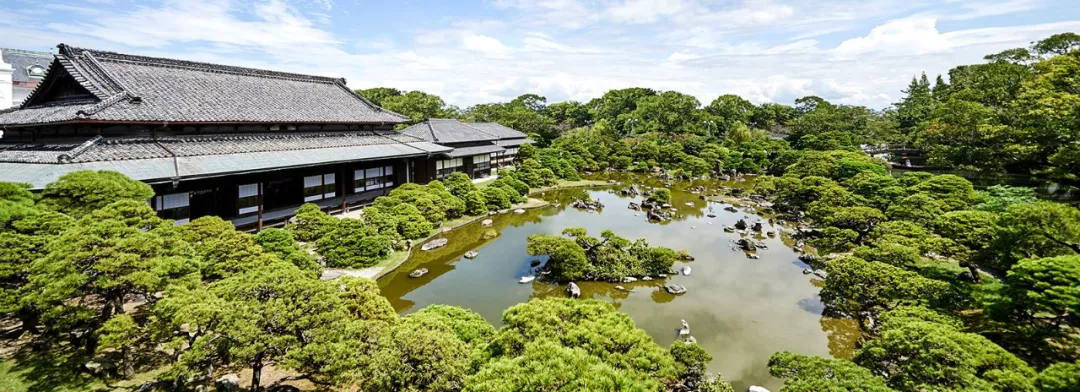
"Shoutouen" is a scenic Japanese garden, built in the 43rd year of the Meiji era (1910) by the 14th Count Tachibana Kanji. As its name suggests, it is a pond surrounded by lush black pines, with two large islands, several rocky islands, and various decorative stones and stone lanterns, creating a beautiful garden landscape symbolizing the sea. Today, the entire area, consisting of the residence, Shoutouen, and Western-style building, is designated as a national cultural property under the name "Tachibana Family Garden."
Yanagawa was once the territory of the legendary warlord Tachibana Muneshige, known as the "Unmatched in the West." Muneshige was a legendary figure who contributed to Toyotomi Hideyoshi's unification of Kyushu, allowing him to become a daimyo independent from the Otomo clan. During the Imjin War, he bravely saved the famous general Kato Kiyomasa, thus gaining great fame. He was not only skilled in martial arts but also engaged in literature and arts, excelling in calligraphy and performing well in tea ceremony, incense ceremony, and kyogen. Yanagawa is the hometown of Zhu Shunshui, a student during his stay in Japan, and the Edo period thinker known as "The Great Confucian of the West Sea," Andong Sheng'an. The teacher-student relationship between Zhu Shunshui and Andong Sheng'an is a timeless tale in the area.
Famous sumo wrestlers from Yanagawa include Unryu Kyukichi and Koto Shokiku Hiro, and Yanagawa is also known as a "Land of Literature." Novelist Dan Kazuo and Akutagawa Prize winner Hase Kenji have an inseparable bond with Yanagawa. It is also the hometown of the great poet Hakushu Kitahara, who once wrote, "The water of Yanagawa, my birthplace, the mother of my song; the composition of water, this place, gives birth to my body, forms my style."
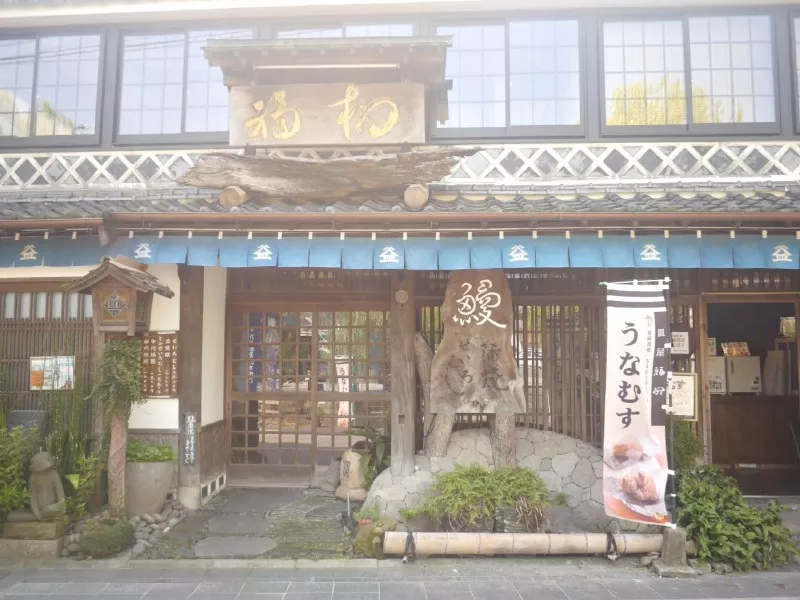
What attracts tourists to Yanagawa the most is the food. In the local authentic restaurants, one can taste "eel steamed rice," seafood from the Ariake Sea, and various seasonal local banquet dishes. "Although there are many fish in the sea and river, none surpasses eel." In 1922, Hakushu published an article in the "Yanagawa Shimbun," stating that when discussing the landscapes that should be preserved in Yanagawa, he wrote: "The water of Yanagawa, the fireflies of Yanagawa... must be the eels of Yanagawa." Yanagawa City has a deep connection with eels, dating back to the late Edo period, where there was a clear division of labor in the eel industry in the Yanagawa domain (a feudal territory during the Edo period in Chikugo Province), including fishing, measuring, mediating, and wholesale.
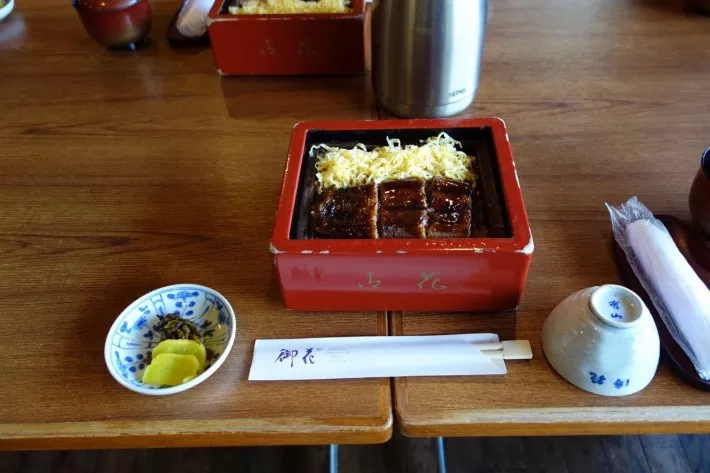
The famous dish "eel steamed rice" is prepared in a unique way. First, the cut eel is continuously grilled over charcoal with chopsticks without adding any seasonings. After grilling, a secret sauce is brushed on, then the grilled eel is cut and neatly arranged on rice, topped with some shredded egg skin, and finally steamed. The eel skin is crispy and delicious, while the fish meat is fresh and tender. The thick sauce seeps into the rice, making it particularly flavorful.
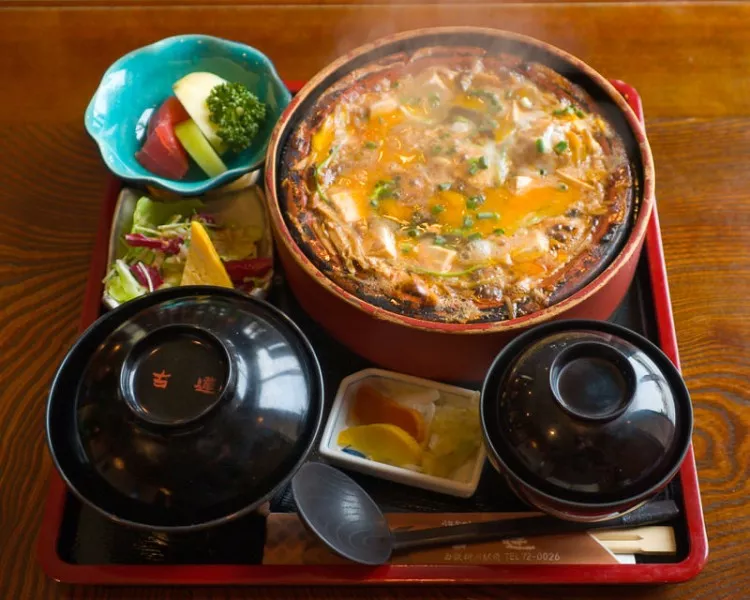
In addition to eel rice, Yanagawa hot pot is also a major local specialty. The pot contains mixed rice, burdock, egg flower, and green onions, with the main ingredient being loach. When eaten together, the fish meat is tender and pairs well with rice, making it easy to finish the entire dish.
Visitors usually experience the charm of Yanagawa City by taking a small boat called "Donko-bune" down the moat, enjoying the sights from the river. The boat leisurely sails along the inner moat (or outer moat) surrounding Yanagawa Castle, listening to the sound of bamboo poles paddling through the water. The boatman, wearing a straw hat and traditional clothing, steers the boat while singing folk songs and explaining the sights. The banks are shaded by green trees and blooming flowers, with white sea cucumber walls and red brick buildings coming into view, unknowingly weaving through a tunnel of historical culture, immersing oneself in poetic scenery.
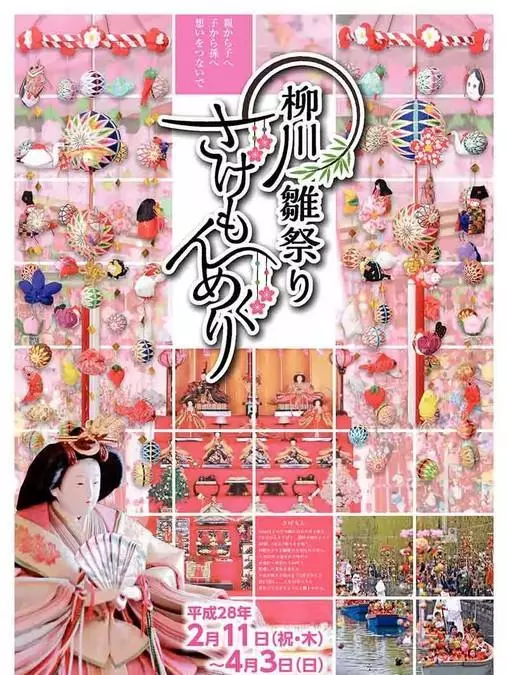
Japan's Doll Festival is usually celebrated on March 3rd, but the activities for Yanagawa's Doll Festival begin as early as mid-February and continue until early April. If you visit between mid-February and early April each year, you can participate in the "Doll Festival" and experience boat rides. The Doll Festival, known in Japanese as "Hina Matsuri," is a holiday to pray for daughters in the family. During this time, families display various exquisite doll figurines in their homes, and on the boats along the Yanagawa River, doll figurines are also displayed for tourists to admire.
